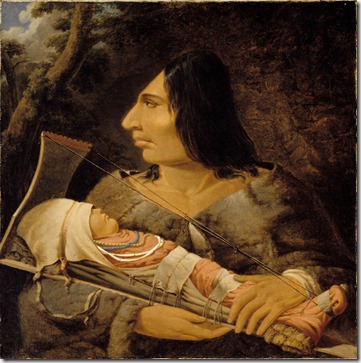Dopo una bella giornata passata insieme c’è chi paga in contanti la propria amante e c’è invece chi le regala l'anello che ha sempre desiderato.
Nella sostanza non esiste differenza tra i due comportamenti ma voglio proprio vedere chi è disposto ad equipararli. Nessuno.
Perché?
Probabilmente il nostro cervello non ragiona bene: si è formato migliaia di anni fa per risolvere i problemi che avevamo allora, i problemi di oggi sono così diversi che lui arranca, cosicché fa parecchi errori. Il fenomeno ha un nome: “maladaptation”. E’ il brodo dove sguazza lo psicologo evoluzionista.
Oppure chi paga in contanti viola una convenzione sociale. Le due risposte non sono poi così diverse, la "convenzione" non ha nulla di sostanziale ma cio’ non significa che sia irrilevante.
In realtà è talmente importante che noi siamo “nati” per creare, rispettare e punire chi viola le convenzioni sociali.
Provate a mettere davanti a dei bambini di tre anni una persona autorevole che maneggi con maestria un aggeggio misterioso dalle funzioni arcane. Ripetete l’operazione per più volte, magari con i genitori dei bimbi che stupiscono ed applaudono la persona autorevole. Se poi consegnate quello stesso oggetto ai bambini cercheranno di ripetere i gesti che hanno visto. Infine, presentate sulla scena un individuo buffo che maneggi goffamente lo stesso arnese ma in modo alquanto differente; i bambini avranno un soprassalto e protesteranno in modo veemente contro l’uso anomalo. Disprezzo e dissociazione saranno i sentimenti più naturali tra loro.
Il “diverso” è da noi contestato, ostracizzato e in casi estremi soppresso.
I bambini sono tremendi: provano piacere ad imparare e condividere una regola (anche del tutto inutile), ma soprattutto provano piacere a punire chi la viola. Un neuroscienziato vi dirà che nel loro cervello accade la stessa cosa quando imparano e quando castigano.
Prendi il fenomeno del bullismo. E’ chiaro che il primo colpevole delle vessazioni è il bullo stesso. Qualcuno coglie anche delle responsabilità nella vittima debole e con la tendenza ad isolarsi. Di solito però si evita di incolpare il gruppo (quel gruppo in cui la vittima non si è integrata). Eppure, spesso, è il gruppo stesso a spingere il bullo verso la vittima deviante che fatica ad uniformarsi. Oppure ancora è il bullo che intende esibire le sue prodezze avendo il gruppo come spettatore.
Nelle storie i personaggi preferiti sono i castigatori del “mostro” (mostro = deverso). L’eroe che aiuta il mostro messo a malpartito non viene capito molto, lascia un po’ interdetti, anche se un comportamento del genere fa capolino in alcuni libri dell’infanzia contemporanei.
I bambini sono dei veri moralisti: imparano molto meglio se la cosa è spiegata loro in termini di “doveri”! Se dico che il sole “deve” tramontare capiscono al volo il fenomeno. Meglio che se mi limitassi a proporre una mera descrizione del tipo “il sole tramonta”.
Il nostro cervello è una macchinetta in cerca di qualcuno a cui ubbidire, in cerca di doveri da rispettare o da far rispettare. Possiede anche una singolare abilità nello scovare i modelli più appropriati.
I bambini sono nati per essere addomesticati. Mike Tomasello ha studiato a fondo la faccenda: secondo lui la nostra mente ci spinge di default ad selezionare e imitare un modello (qualunque cosa faccia), poi anche a castigare i devianti. I devianti ci disturbano più che se ci pestassero un piede. Abbiamo un pro-social bias che nei bambini è già sviluppatissimo. Il conformismo è la regola aurea.
Mentre la regola si impara, la punizione del diverso no: quella ci viene proprio naturale.
Il modello è decisivo. Occorre una cattedra con tanto di pedana che lo elevi e che lo renda tale. Occorre il rispetto degli altri adulti. Occorre che già condivida con me altre convenzioni come il linguaggio o i gusti. Già a 5/6 mesi noi prestiamo più attenzione a chi ha un accento affine a quello della mamma. Esistono meccanismi raffinati attraverso i quali selezioniamo i modelli.
Viviamo in un mondo di convenzioni, molte delle quali arbitrarie, e ci controlliamo a vicenda circa il loro rispetto. Le sanzioni vanno dal pettegolezzo all’esecuzione sommaria.
Anche la reputazione è una specie di patente a punti. Presso i bimbi il meccanismo della reputazione è già pienamente operativo.
Con la vergogna sto dicendo: “temo le convenzioni e sono pronto a rispettarle”. Dan Fessler è andato ancora più a fondo: la vergogna è un ordinatore sociale, un modo per riconoscere il proprio posto e la dominanza altrui: il bambino ha vergogna della maestra, e lo svergognato è un deviante da punire. Nella punizione dovuta allo svergognato maestra e compagni collaborano.
Il rispetto delle convenzioni è una sorta di giuramento di fedeltà al gruppo e la competizione tra gruppi è decisiva per la razza umana.
Quanto più la convenzione è difficile da onorare, tanto più il giuramento è difficile da falsificare: se infibulo mia figlia o circoncido mio figlio puoi fidarti di me, sono uno dei tuoi, non farei mai una cosa del genere se non per un motivo realmente importante come giurare fedeltà al gruppo.
In questo senso ci si inventa di tutto: crani da deformare, colli da allungare, piedi da accorciare, digiuni da osservare, vacanze improbabili da sopportare… Ogni cultura ha i suoi giuramenti.
I lupi divennero cani eliminando i riottosi. Con l’uomo vale la stessa cosa: solo chi ha un cervello idoneo ad uniformarsi puo’ sopravvivere. Solo chi conosce l’arte del giuramento ha qualche chance. Chi paga in contanti la propria amante non si puo’ certo dire che conosca l’arte del giuramento: verrà lasciato dalla sua amante e disprezzato dagli altri.
I cervelli più affidabili sono quelli che non fanno calcoli e ubbidiscono per principio, un tedesco attende il verde anche nel deserto. In questo senso, è bene che la razionalità ceda alle convenzioni. Per questo chi paga in contanti non è come chi regala una pelliccia, anche se la ragione non vede sostanziali differenze.
Essere acritici ci protegge meglio dalle tentazioni, ci evita carichi cognitivi ma soprattutto ci fa apparire più affidabili. Mia mamma sta dalla mia parte, lo so per certo perché se vede che ho bisogno non si metterà mai a soppesare le mie colpe eventuali prima di tendermi la mano.
Ci vuole un certo sforzo cognitivo per violare le norme, dal che discende il fatto che le persone più intelligenti siano anche le più infide: vanno bene per interagire con lo straniero a nome del gruppo, potranno ingannarlo traendo profitti per tutti.
Questo intreccio di convenzioni in cui viviamo ha un nome, si chiama “cultura”.
Geni e cultura “coevolvono”. Cio’ non significa che esiste una “cultura naturale”. Cio’ che esiste in natura è un cervello in grado di apprendere, imitare ed escludere gli eccentrici. La norma sociale specifica puo’ esse la qualunque.
Nella nostra cultura se paghi in contanti la tua amante la degradi a prostituta recandole un’offesa imperdonabile: i nostri cervelli hanno interiorizzato questa mera convenzione. In altre culture – per esempio a Samoa - porgere un pacchettino di banconote alla donna per cui spasimi è invece segno di vero amore: i loro cervelli hanno interiorizzato questa convenzione. Ci sono molte somiglianze tra i nostri e i loro cervelli: entrambi sanno interiorizzare delle norme sociali.
La norma sociale ci marchia: nel rispettarla diciamo tante cose e ci rendiamo prevedibili. L’essere prevedibili migliora la vita del gruppo coordinandolo. Se l’incertezza è un male per tutti, la prevedibilità è un bene per tutti.
Lo stereotipo rende la vita vivibile e gli fa aumentare di valore. Siamo degli indefessi costruttori di stereotipi. Grazie agli stereotipi possiamo programmare la nostra esistenza.
Quando facevo il militare a Mondovì la movida era il Giovedì sera, c’era questa usanza arbitraria, si era creato questo stereotipo gratuito. La cosa era però molto utile: se volevi una serata tranquilla evitavi il Giovedì, se volevi una serata eccitante sapevi per certo che il Giovedì era il giorno migliore.
Se posso prevedere che guiderai la destra, a mia volta terrò la destra evitando terribili incidenti. La convenzione è arbitraria ma su roba del genere una comunità prospera. Se sei un tipo tanto originale c’è il rischio che trasgredirai anche la convenzione sulle direzioni di marcia. Questo rende tutto più incerto e mi fa rinunciare alla macchina: è gente come te che manda in malora la nostra comunità!
Tanto più è necessario coordinarsi, quanto più il rispetto delle convenzioni sociali è importante. La guerra è l’atto che richiede il maggior coordinamento sociale (non a caso i battaglioni devono marciare a ritmo perfetto: un-due, un-due).
Le persone che hanno vissuto la guerra sono le più irrazionalmente altruiste, le più disposte a sacrificare il loro bene per osservare convenzioni arbitrarie. E quanto più la guerra le ha toccate (per esempio con un lutto in famiglia), tanto più sono generose e disposte a “marciare seguendo il ritmo” senza nessun motivo apparente, solo come segno di disponibilità a sacrificarsi per il gruppo.
La pace fomenta la razionalità e l’egoismo. Ogni richiesta avanzata in tempo di pace suscita un “perché?”, un “chi me lo fa fare?”. In tempo di pace la comunità è giusto uno sfondo o “io” sono il protagonista.
La pace porta il progresso e il progresso è un altra fonte di egoismo. Se prima il gruppo era la nostra assicurazione ora – con il progresso - possiamo stipulare una polizza che sostituisca le reti relazionali: meno necessità del gruppo, meno necessità dei giuramenti, meno necessità di altruismo.
A chi rimpiange i bei tempi non resta che sperare in guerre, carestie, siccità e saccheggi.
Nela battaglia contro il razzismo si dice continuamente che “non esistono razze ma solo etnie”. Lo si dice in buona fede per evitare i conflitti, senza capire che i veri conflitti si hanno tra etnie differenti e non tra razze differenti.
Lasciamo perdere la questione dell’esistenza delle razze, non stiamo parlando di questo. Molto più semplicemente, si definisce “differenza etnica” una differenza culturale e “differenza razziale” una differenza morfologica. Il vero scontro tra gruppi si ha solo nel primo caso.
Se un nero parla in milanese io mi sento rassicurato. Se un bianco parla un dialetto a me incomprensibile io sto sul chi va là.
La natura ci predispone unicamente al conflitto etnico (tra culture), è a livello culturale che si realizza la competizione tra gruppi. Le razze sono irrilevanti se non come segnalatori esterni di possibili differenze culturali.
Ora sappiamo perché le guerre civili sono più crudeli, o perché i conflitti etnici scatenino un vero odio. Spesso non si puo’ nemmeno dire che il razzista odi le razze che reputa inferiori, a volte c’è nei loro confronti una specie di paternalismo, sebbene l’equivoco abbia avuto nella storia esiti tremendi come la schiavitù.




